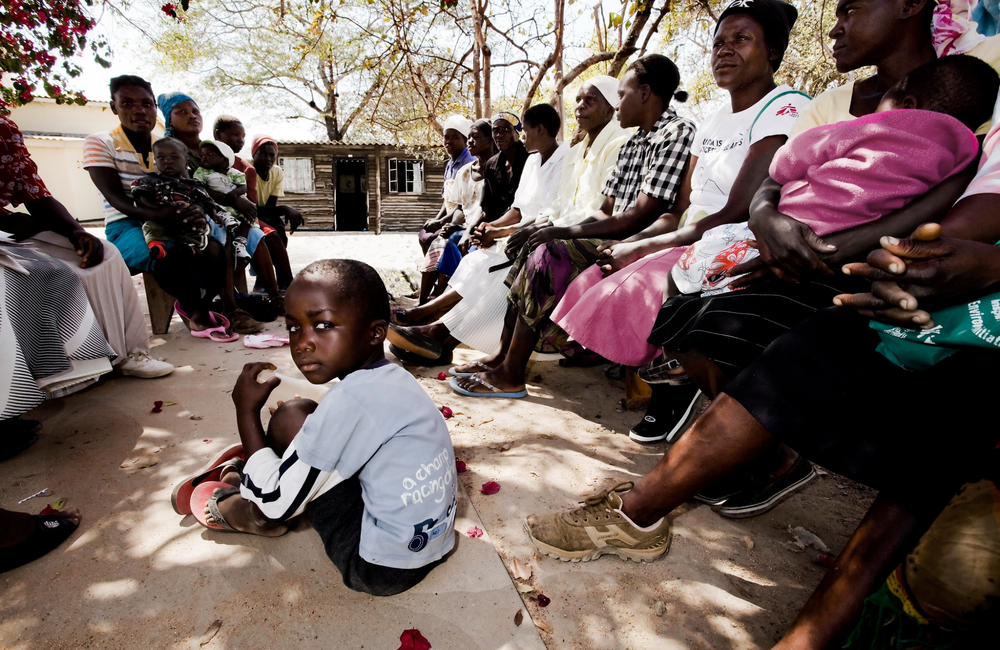
Maternal HIV status is associated with the risks of having undernourished children, according to research conducted in Zimbabwe and published in AIDS. The prevalence of stunted growth, being underweight and wasting were compared between the children of HIV-positive and HIV-negative mothers in three surveys between 2005 and 2015. These coincided with the increased rollout of antiretroviral therapy (ART) in Zimbabwe and efforts to address hunger and food insecurity. Although the prevalence of these key markers of undernourishment declined in the children of both HIV-positive and HIV-negative women, the children of mothers living with HIV remained up to a third more likely to be stunted or underweight than the children of HIV-negative women.
“Maternal HIV status is an important risk factor for undernutrition and child development, both by the social and food security realities of having a parent with HIV as well as the biological relationship between HIV exposure and growth restrictions among exposed children,” write the authors. “Our findings indicate that changes in guidelines did not overcome the effect of maternal HIV status on child growth outcomes in the period of our analysis, posing a significant challenge for policymakers and researchers.”
The study was conducted by Emily Groene and colleagues at the University of Minnesota. They noted that HIV incidence in Zimbabwe is two times higher among women of childbearing age compared to men. Moreover, previous studies have shown that the children of mothers with HIV have poorer growth and development compared to the infants of HIV-negative mothers. The causes include a reduction in the ability of mothers with HIV to exclusively breastfeed, the impact of the virus on maternal health and the wider social and economic consequences of HIV infection. Moreover, impaired development has been observed in the children of HIV-positive women, whether the infant is HIV positive or negative.
Access to ART has expanded considerably in Zimbabwe over the past two decades, with significant changes to guidelines in 2012 and 2014. Despite this expanded rollout, the rate of mother-to-child HIV transmission remains high (621 infections per 100,000 live births, well above the 50 per 100,000 target set by the World Health Organization (WHO)).
Food insecurity is also widespread in Zimbabwe, affecting almost half of households in 2012. Several childhood nutrition programmes have been initiated to address this crisis.
Groene and her colleagues wanted to see if rollout of ART, efforts to reduce mother-to-child transmission and food security programmes had impacted on the nutritional and developmental status of the children of HIV-positive mothers.
They therefore analysed information gathered in three rounds of the Zimbabwe Demographic Health Survey: 2005, 2010 and 2015. This household-based survey is nationally representative and the present study was limited to the children of women who agreed to voluntary HIV testing.
Childhood development was assessed using WHO Childhood Growth Standards, including stunting (height-for-age), underweight status (weight-for-age) and wasting (weight-for-height).
The proportion of women living with HIV declined from 22% in 2005 to 16% in 2010 and 15% in 2015. The proportion of children receiving at least one vaccination increased from 75% in 2005 to 95% ten years later.
The prevalence of stunting declined between 2005 and 2015 for the children of both HIV-positive and HIV-negative mothers, but in each survey round its prevalence was higher among the children of women living with HIV. In 2015, the prevalence was 25% among the children of HIV-positive mothers compared to 20% for the children for mothers without HIV.
A similar trend was observed for underweight status. In 2015, 15% of the children of HIV-positive mothers were underweight, compared to 11% of the children of mothers without HIV.
In the 2015 survey, 4% of children suffered wasting, regardless of the HIV status of the mother.
Overall, the researchers calculated that the children of mothers with HIV had a 32% increase in their risk of stunting (OR = 1.32; 95% CI, 1.16-1.5), a 27% increase in the risk of being underweight (OR = 1.27; 95% CI, 1.1-1.48) and 7% increase in the risk of wasting (OR = 1.07; 95% CI, 0.81-1.42) compared to the children of mothers without HIV. The difference in risk for stunting and being underweight were statistically significant.
There was no appreciable closing of the gap in developmental status between the children of HIV-positive and HIV-negative mothers across the three survey rounds. This was despite expanded ART rollout and the introduction of food security initiatives during this period.
“These results confirm that the relationship between maternal HIV-positive status and child undernutrition persisted between 2005 and 2015 in Zimbabwe,” conclude Dr Groene and colleagues. “This evidence should inform health and food security program implementation in Zimbabwe and other sub- Saharan African countries by focusing on mothers with HIV."
Groene EA et al. Maternal HIV and child anthropometric outcomes over time: an analysis of Zimbabwe demographic health surveys. AIDS, 35: 477-84, 20121.
doi: 10.1097/QAD.0000000000002772
Full image credit: Psychosocial support group in Zimbabwe (part of a prevention of mother-to-child transmission programme). Image by Elizabeth Glaser Pediatric AIDS Foundation/DFID - UK Department for International Development. Available at www.flickr.com/photos/dfid/5181910358/ under Creative Commons licence CC BY-NC-ND 2.0.
